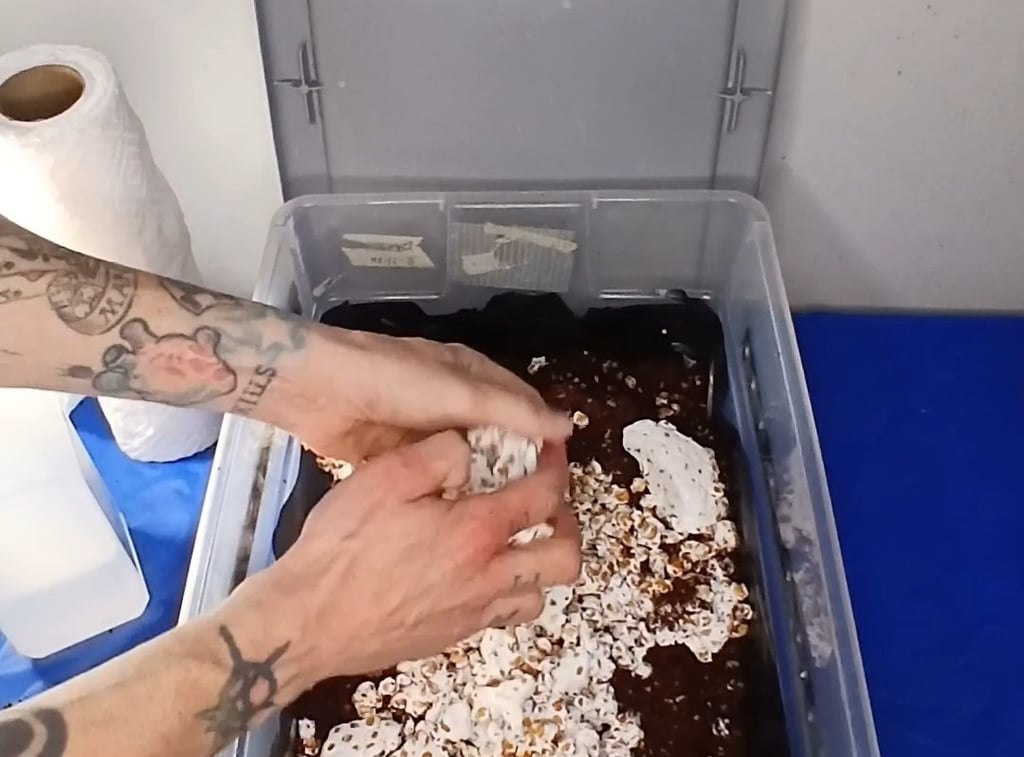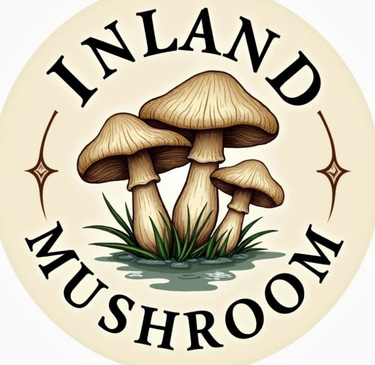How to Spawn Grain to Bulk in a Monotub (Gourmet Mushrooms)
Learn how to spawn grain spawn to bulk substrate in this step-by-step guide for mushroom cultivation. Covers how to mix colonized grain with coco coir, vermiculite, and other bulk substrates. Perfect for beginners and home growers using monotubs, dub tubs, or grow bags.
GROWING
3/14/20253 min read


How to Spawn Grain to Bulk in a Monotub (Gourmet Mushrooms)
Spawning grain to bulk is a crucial step in growing gourmet mushrooms at home. This process involves mixing colonized grain spawn with a nutritious bulk substrate, such as coco coir, to provide the ideal conditions for healthy mycelium growth. Whether you're growing Lion’s Mane, Oyster, or other gourmet varieties, this guide will walk you through the step-by-step process of spawning a tub. I have personally been using this method for years and have had great success with it. The thing I like about using tubs compared to grow bags is that you can reuse them and save money.
What You'll Need:
Fully colonized grain spawn (e.g., rye, millet, or wheat berries)
Pasteurized or properly hydrated coco coir (or a mix of coco coir and vermiculite)
A clean plastic tub with a lid (monotub or dub tub setup)
Gloves and a face mask (optional but recommended for cleanliness) Note: I used to wear gloves all the time when I first started but have found that just keeping your hands clean and applying rubbing alcohol before working is usually fine. Also, when you're working with fully colonized grain, there's less chance of contamination.
Mixing spoon or gloved hands
Spray bottle with clean water
Step 1: Prepare Your Substrate
Before spawning your grain, make sure your bulk substrate is at field capacity—meaning it holds moisture well but doesn’t drip excessively when squeezed. If you're using coco coir, you can hydrate it with hot water and mix in vermiculite for extra aeration.
Step 2: Break Up the Colonized Grain
Take your fully colonized grain spawn and gently break it apart inside the bag or jar to separate the kernels. This will help evenly distribute the mycelium throughout the bulk substrate. If the jar is hard to break up, use a clean spoon.
Step 3: Layer or Mix the Spawn and Substrate
There are two common methods for spawning grain to bulk:
Layering: Start with a base layer of substrate, add a layer of broken-up grain spawn, and repeat the process until everything is evenly distributed.
Mixing: Pour the grain spawn directly into the tub with the substrate and mix everything together thoroughly for even colonization.
Both methods work, but mixing tends to promote faster colonization. I layered for years and just recently started mixing, and I did find that it colonizes more evenly and faster.
Step 4: Level and Lightly Pack the Surface
Once mixed, gently level out the substrate surface without pressing it down too firmly. A fluffy surface helps with air exchange and mycelium growth.
Step 5: Cover and Incubate
Place the lid on your tub and let it sit in a dark, warm place (around 70-75°F) for the next 7-14 days. The mycelium will spread through the bulk substrate during this time. You’ll know colonization is complete when the entire surface is covered in white mycelium.
Step 6: Transition to Fruiting Conditions
Once fully colonized, introduce fresh air and light by removing the lid slightly or adding filtered holes to the tub. Increase humidity by misting the sides of the tub, but avoid directly spraying the substrate. Within a few days to weeks, you should start seeing mushroom pins forming!
Final Tips:
Keep an eye on moisture levels. If the surface looks dry, mist lightly.
Avoid excessive handling to reduce contamination risks.
Be patient! Some mushrooms take longer to fruit than others.
By following these steps, you'll have a successful gourmet mushroom grow using the monotub method. If you want more detailed tutorials and product recommendations, check out the rest of our guides!
Want more simple, beginner-friendly mushroom growing techniques?
👉 Grab my Mushroom Recipe Ebook — it includes my agar method, substrate recipes, and liquid culture tips to help you grow successfully at home.
Cultivation
Helping you master gourmet mushroom cultivation — on or off the grid.
© 2024. All rights reserved.
